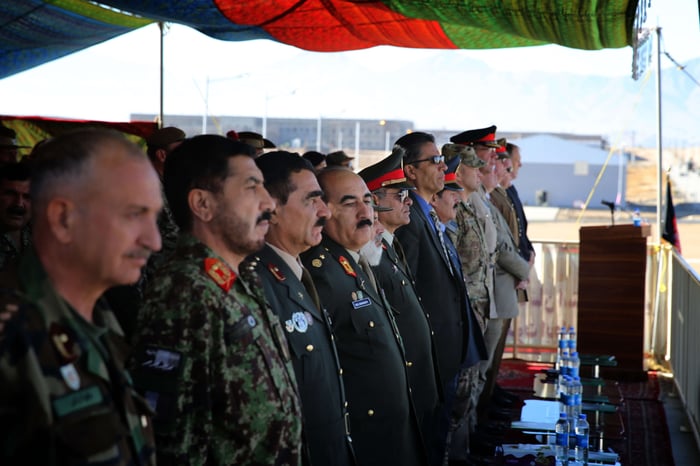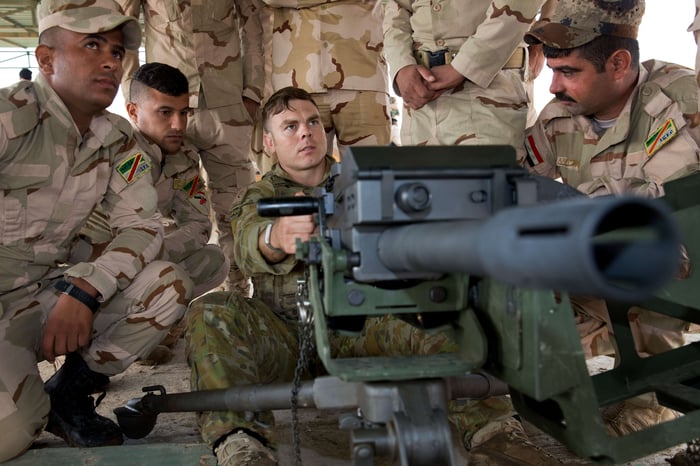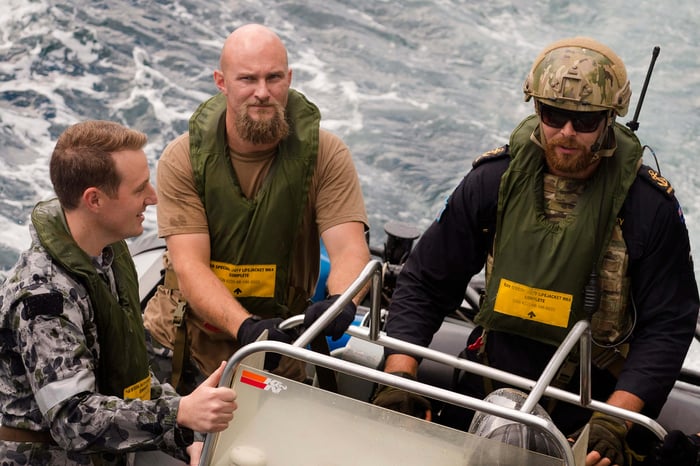
Their Duntroon in the Dust
November 2015 saw a fresh batch of Afghanistan’s finest and most fervent officer cadets graduate from the Afghan National Army Officer Academy (ANAOA) in Qargha, west of Kabul. The event marked the fourth graduation since the Academy’s inaugural term commenced in October 2013, with the total number of graduates now exceeding 1,000 officers.
Members of the Australian Defence Force were central to the early success of ANAOA, proving mentoring and force protection to advise and assist the Academy’s Afghan instructors as part of a five-nation, British-led task force based at Camp Qargha.
Mentor to the Commanding Officer of the Academy’s 2nd Kandak (Battalion), Lieutenant Colonel Mike Freeman said the most recent graduation was a tangible sign that progress is being made. “Close to 280 young officers have just passed out of the academy and into their branch or trade training,” he said.
“In a matter of months most of these officers will be in the provinces and taking the fight to the enemy. Indeed, we are aware of three graduates who have been killed in action - two of whom were in acting tolay (company) command when killed."
“The feedback we’re getting from the Corps is that the ANAOA graduate is head and shoulders above graduates from other Afghan officer training institutions.”
The ANAOA, modelled on the Royal Military Academy Sandhurst in the United Kingdom (and similarly the Royal Military College Duntroon), is designed to teach Afghan National Army officers key leadership and tactical skills. The Academy is referred to as ‘Sandhurst in the Sand’ by the Afghan instructors and cadets.
The 12-month officers’ course is broken into three parts; First term covers basic soldier skills, the second term is focused on planning and platoon leading and the third term is counter-insurgency and instructor-module focused. “All graduates will leave with basic instructor qualifications and an idea of more complex operating environments,” said Lieutenant Colonel Freeman.
The infantry stream will absorb the majority of the 278 graduates, with a further 20 destined for combat engineering, 30 for signals, 30 for mechanical and vehicle maintenance, and another 20 for transport and logistics. Nine females were included in the graduating Kandak, adding to the first 19 female officers who graduated in June this year as part of the Academy’s third intake.













